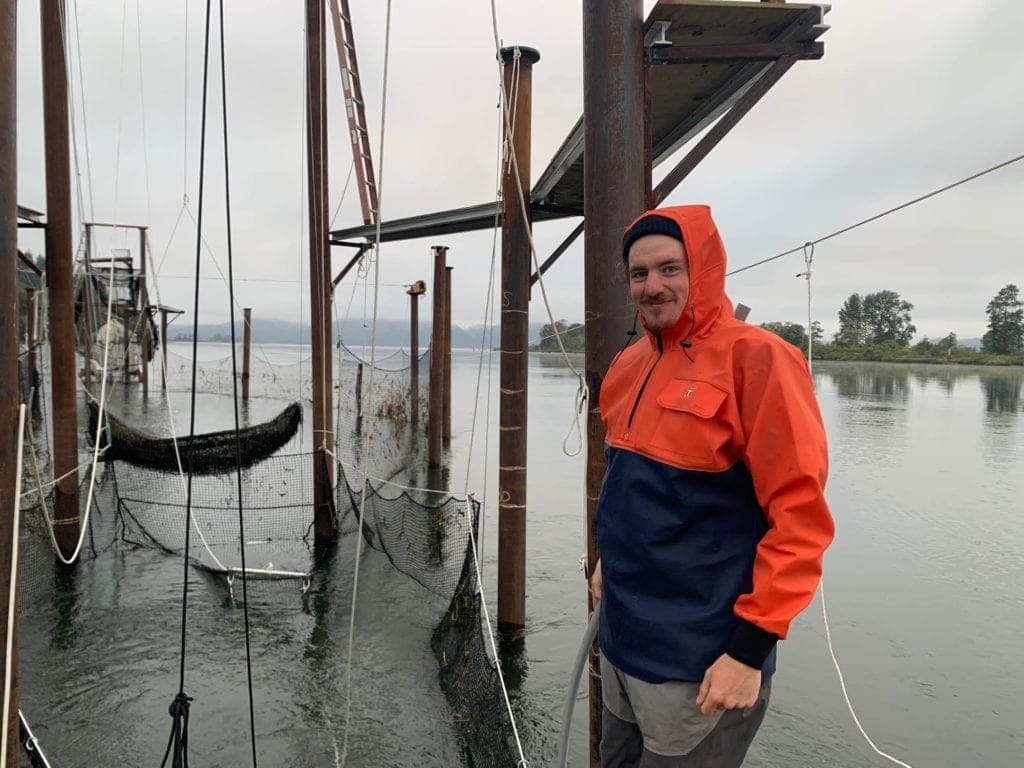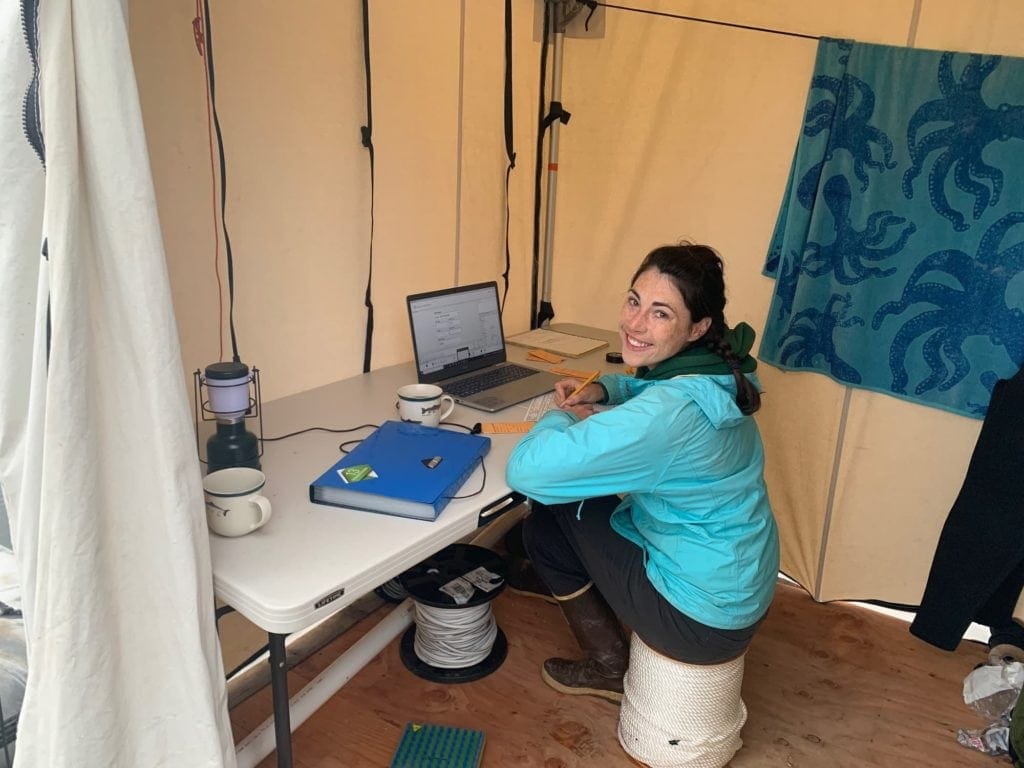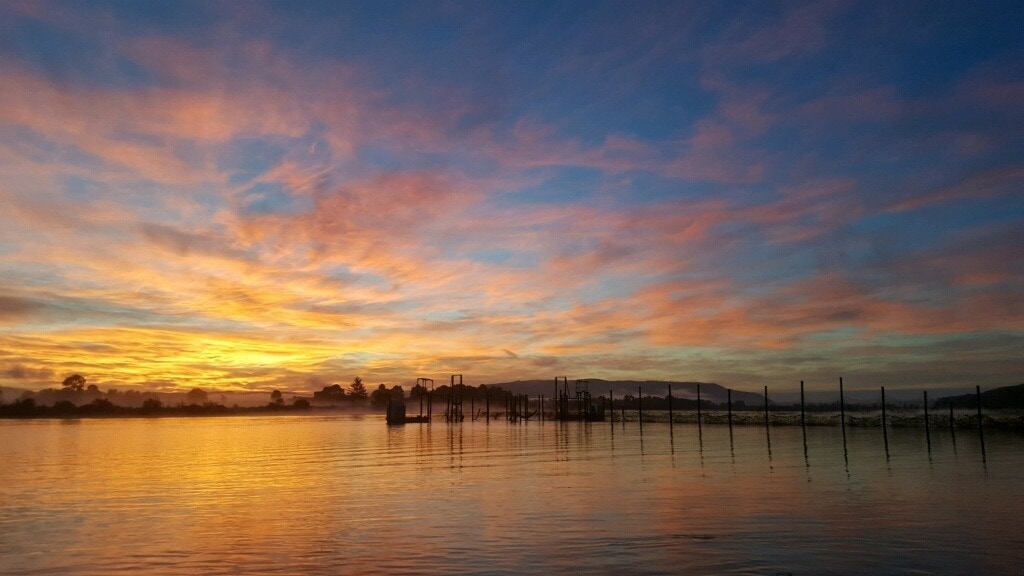Research is underway at Oregon’s first fish trap in over 70 years on the lower Columbia River. At present, Wild Fish Conservancy biologists and our local commercial fishing partner Billie Delaney are passively capturing salmon and steelhead for data collection and release to inform management of commercial fisheries and shed light on the utility of modified fish traps for selective commercial fishing.
Since late-August, the research team has been experimenting with the new trap design and location day and night, assessing bycatch encounters and post-release survival from the modified fish trap in Clifton Channel. Chinook salmon and steelhead encountered are tagged with Passive Integrated Transponders (PIT) to track migration patterns and upriver survival of fish released from the fish trap. This mark-recapture research has been encouraged by Columbia River management agencies to evaluate potential improvements in bycatch survival from the new modified trapping process.

WFC is further conducting a study of coho salmon post-release survival through a net pen holding methodology. For this study, coho salmon passively captured with the fish trap are released into a net pen and held for 6 days to determine the proportion of fish that survive post-release from the gear. Like the mark-recapture experiment for Chinook salmon and steelhead, this methodology has also been encouraged by Columbia River management agencies that are actively pursuing a 6 day coho salmon holding study for tangle net gear (a form of modified gill net) later this fall.
Although the study remains in progress, WFC has already tagged hundreds of adult salmonids and completed 6 days of holding for the first sub-sample of coho salmon. Results of the first coho salmon holding period demonstrated that 37 of 38 fish survived 6 days post-release (with one fish mortality occurring 2 days post-release for unknown and potentially natural causes). So far, survival is over 97% for coho salmon in the short-term (defined as 0-2 days post-release) with long-term survival (defined as 2-6 days post-release) at 100%.
These findings to date roughly mirror the results of our prior 2 day (n = 121) and 4 day (n = 105) holding studies for coho salmon that occurred in 2019 and 2020, respectively, in which 100% of all fish survived in each year of study. Pooling results of short-term net pen holding from three years of study, short-term survival is approximately 99.6%; long-term survival is 100%. This comes as no major surprise to us as researchers given the passive means of capture and release demonstrated in the short video below.
Moving forward, WFC will continue to tag Chinook salmon and steelhead; 2-3 additional sub-samples of coho salmon will be held between today and the start of October. This research will cover a broad range of river conditions and temperatures over the peak of the Chinook and coho salmon fishery through means directly requested by resource managers.

Although plenty of work remains to be done, results of the 2021 Clifton Channel fish trap project continue to suggest that the modified passive fish trap design is one of the lowest-impact means of capturing and sorting salmonids for selective harvest or safe-release. We will continue to provide updates as the results come in for the coho salmon holding study. Mark-recapture data requires genetic processing, so we are patiently awaiting the results as the samples must be processed in the lab.
Until then, thanks to all for your support–it’s back to work for us at the new Oregon fish trap!

*This project received funding under award #NA19NMF4720230 from NOAA Fisheries Service, in cooperation with the Bycatch Reduction Engineering Program. Additional funding has been provided by the WA Department of Fish and Wildlife (WDFW) and the Oregon Department of Fish and Wildlife (ODFW). The statements, findings, conclusions, and recommendations of this online post are those of Wild Fish Conservancy and do not necessarily reflect the views of the funders.
Join our mailing list to recieve important updates on our work, the latest wild fish news, & opportunities to take action to support wild fish.
This site is protected by reCAPTCHA and the Google Privacy Policy and Terms of Service apply.
Wild Fish Conservancy is recognized as a 501(c)3 non-profit by the IRS